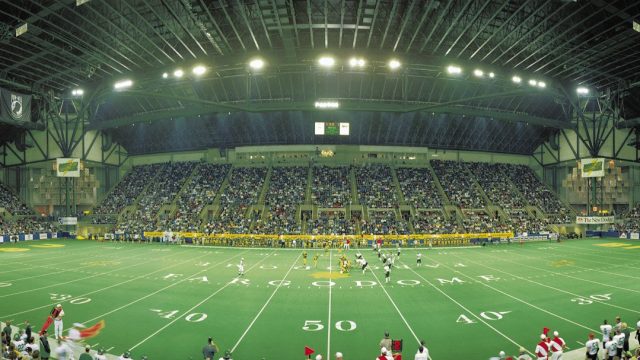Maybe NDSU Could Keep Its Buildings In Repair If It Wasn't Subsidizing Athletics Programs

Lately our university system, which a larger increase in appropriations than any other system of public universities in the country, has been bemoaning the condition of their buildings. As the payroll for our universities has bloated with administrative hiring and university presidents live like pharaohs (the president of NDSU literally has a chauffeur/bodyguard and lives in the most expensive residence in the Fargo/Moorhead area), many buildings on campus go without maintenance.
Recently the university system was griping that Governor Jack Dalrymple’s budget contained no money for Dunbar Hall, the chemistry building at NDSU where fires have become a frequent problem. At Harris Hall, also on the NDSU campus, researchers have to lug water because 60-year-old pipes don’t work.
There’s something very wrong when the university has money to let their president live the lifestyle of a spoiled playboy, but not enough money to keep chemistry labs safe from fires and treat researchers to running water.
Which brings me to the story of Dr. Ray Watts, the president of the University of Alabama-Birmingham. Finding that athletics had become a major financial distraction on his campus, he sought to close down the school’s football program (among other sports teams).
The reaction was not kind, as Joe Nocera writes in the New York Times:
When Watts told the team that this would be their last season, one player, Tristan Henderson, angrily challenged him in a video that quickly went viral. Later, several hundred supporters chanted and cheered for the coach, and heckled and chased Watts and his police escort, according to Jon Solomon of CBSSports.com.
Mark Emmert, the president of the N.C.A.A., described Watts’s decision as “unfortunate.” A group of important donors wrote a letter to the chancellor of the Alabama university system, calling for an investigation into Watts’s decision. Another big supporter, a Birmingham restaurateur, canceled his $45,000 sponsorship of a television network that aired U.A.B. games and ended the use of his restaurant as the locale for the basketball coach’s weekly radio show. “This is so tragic,” he told a reporter. “It’s like a death.”
Still, Watts saw the move away from athletics as necessary, especially given how much it was costing the school to subsidize the programs:
Watts, it turns out, is a Birmingham native who played football in high school and who attended the university. He gets how important football is in Alabama. But in pulling together a five-year strategic plan for the school, he came to the obvious conclusion that it simply made no sense to continue fielding a football team. (The school is also eliminating its bowling and rifle teams.)
“Our athletic budget is $30 million,” he told me when we spoke. Of that amount, $20 million comes directly from the school — either through student fees or direct subsidies from the overall university budget. A consultant Watts hired concluded that it would cost an additional $49 million over the next five years to keep the football team competitive with the other schools in Conference USA.
“We could not justify subsidizing football if it meant taking away from other priorities,” he said. Then he added, “This is driven significantly by the changing landscape of intercollegiate athletics.”
This made me think of NDSU and UND, North Dakota’s two largest universities, where athletics are heavily subsidized. At NDSU athletics subsidies paid by taxpayers and students have grown steadily over the years and have, until the football team’s recent championship run, nearly matched revenues. Far from making money, NDSU athletics up to and including the football team get about 40 percent of their total revenues in the form of subsidies.
At UND the situation isn’t much better. Nearly 50 percent of the athletic programs’ revenues come from student fees and taxpayer appropriations, and subsidies are at about $10.6 million total.
Across the university system there is, according to a recent report, some $808 million in deferred maintenance including those two NDSU halls where fire and running water are problems. But does anyone think the public would tolerate those sort of conditions at a football practice facility or hockey arena?
It speaks to the mindset of our university leadership when athletes can play and practice in gleaming, world-class facilities while academics (who are doing the work that is the primary mission of these institutions) work in run-down buildings.
But that’s not just the mindset of the university leadership. They seem to mirror the priorities of the public. It seems clear that North Dakotans care much more about the performance of the sports teams at NDSU and UND than they do the performance of the academic programs.
Which is exactly why we must get athletics off of campus.






